Francisco Förster
Image-Based Multi-Survey Classification of Light Curves with a Pre-Trained Vision Transformer
Jul 15, 2025Abstract:We explore the use of Swin Transformer V2, a pre-trained vision Transformer, for photometric classification in a multi-survey setting by leveraging light curves from the Zwicky Transient Facility (ZTF) and the Asteroid Terrestrial-impact Last Alert System (ATLAS). We evaluate different strategies for integrating data from these surveys and find that a multi-survey architecture which processes them jointly achieves the best performance. These results highlight the importance of modeling survey-specific characteristics and cross-survey interactions, and provide guidance for building scalable classifiers for future time-domain astronomy.
Temporal Stamp Classifier: Classifying Short Sequences of Astronomical Alerts
May 23, 2024



Abstract:In this work, we propose a deep learning-based classification model of astronomical objects using alerts reported by the Zwicky Transient Facility (ZTF) survey. The model takes as inputs sequences of stamp images and metadata contained in each alert, as well as features from the All-WISE catalog. The proposed model, called temporal stamp classifier, is able to discriminate between three classes of astronomical objects: Active Galactic Nuclei (AGN), Super-Novae (SNe) and Variable Stars (VS), with an accuracy of approximately 98% in the test set, when using 2 to 5 detections. The results show that the model performance improves with the addition of more detections. Simple recurrence models obtain competitive results with those of more complex models such as LSTM.We also propose changes to the original stamp classifier model, which only uses the first detection. The performance of the latter model improves with changes in the architecture and the addition of random rotations, achieving a 1.46% increase in test accuracy.
Domain Adaptation via Minimax Entropy for Real/Bogus Classification of Astronomical Alerts
Aug 15, 2023

Abstract:Time domain astronomy is advancing towards the analysis of multiple massive datasets in real time, prompting the development of multi-stream machine learning models. In this work, we study Domain Adaptation (DA) for real/bogus classification of astronomical alerts using four different datasets: HiTS, DES, ATLAS, and ZTF. We study the domain shift between these datasets, and improve a naive deep learning classification model by using a fine tuning approach and semi-supervised deep DA via Minimax Entropy (MME). We compare the balanced accuracy of these models for different source-target scenarios. We find that both the fine tuning and MME models improve significantly the base model with as few as one labeled item per class coming from the target dataset, but that the MME does not compromise its performance on the source dataset.
Deep Attention-Based Supernovae Classification of Multi-Band Light-Curves
Feb 07, 2022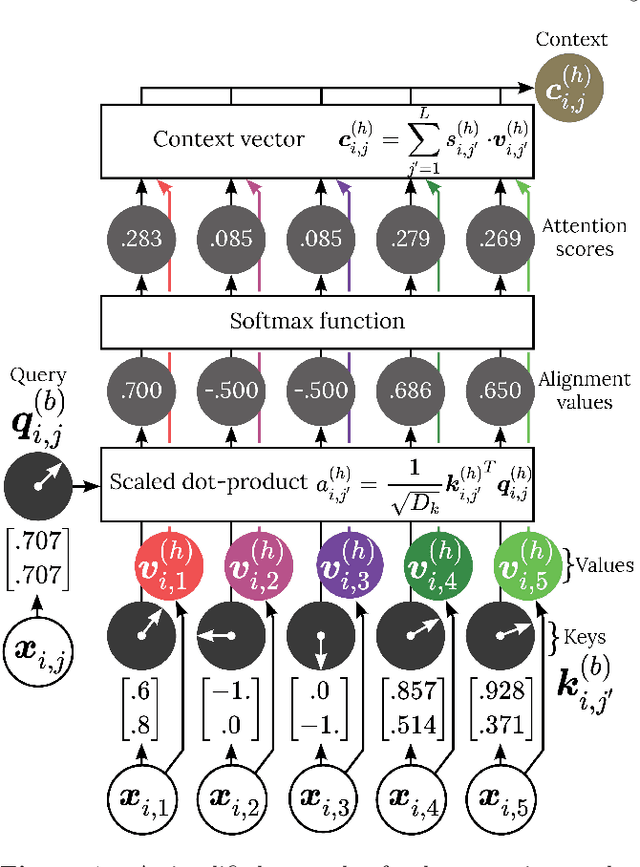
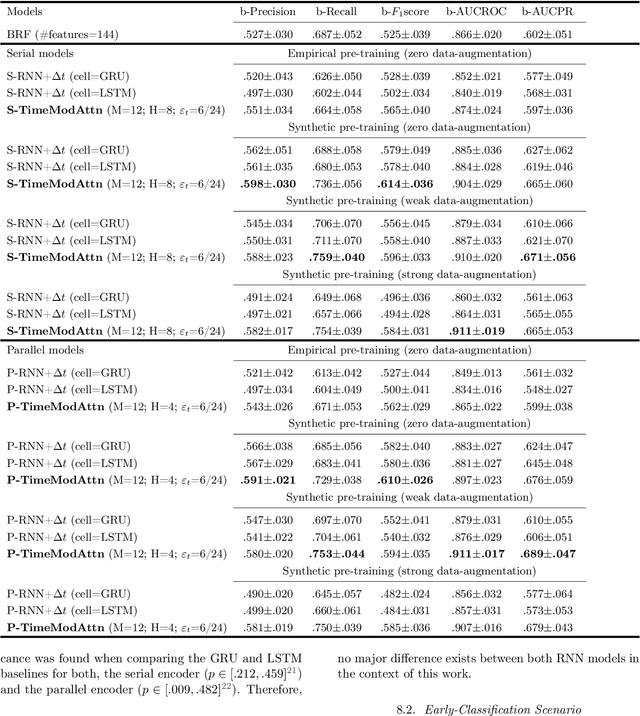
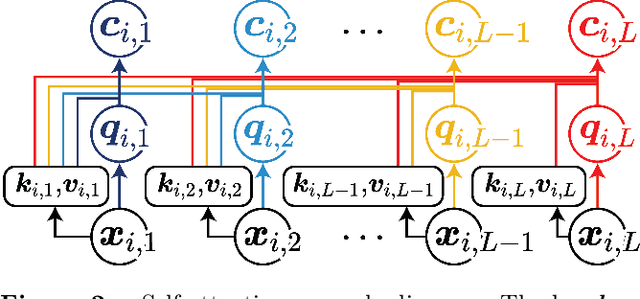
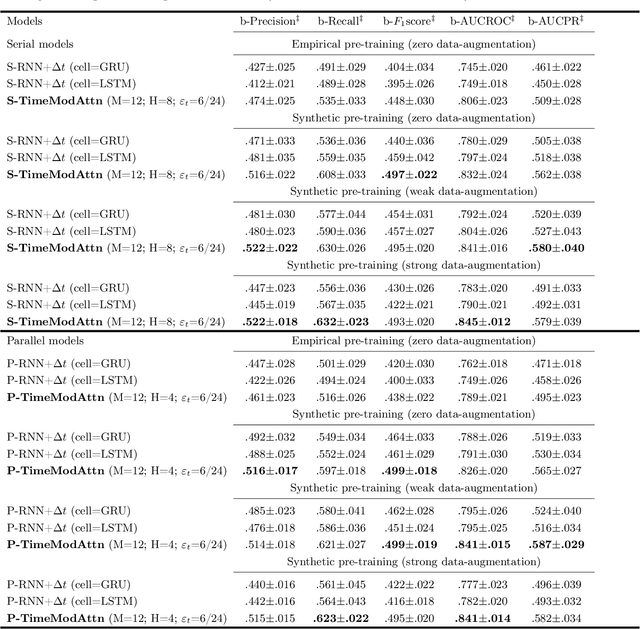
Abstract:In astronomical surveys, such as the Zwicky Transient Facility (ZTF), supernovae (SNe) are relatively uncommon objects compared to other classes of variable events. Along with this scarcity, the processing of multi-band light-curves is a challenging task due to the highly irregular cadence, long time gaps, missing-values, low number of observations, etc. These issues are particularly detrimental for the analysis of transient events with SN-like light-curves. In this work, we offer three main contributions. First, based on temporal modulation and attention mechanisms, we propose a Deep Attention model called TimeModAttn to classify multi-band light-curves of different SN types, avoiding photometric or hand-crafted feature computations, missing-values assumptions, and explicit imputation and interpolation methods. Second, we propose a model for the synthetic generation of SN multi-band light-curves based on the Supernova Parametric Model (SPM). This allows us to increase the number of samples and the diversity of the cadence. The TimeModAttn model is first pre-trained using synthetic light-curves in a semi-supervised learning scheme. Then, a fine-tuning process is performed for domain adaptation. The proposed TimeModAttn model outperformed a Random Forest classifier, increasing the balanced-$F_1$score from $\approx.525$ to $\approx.596$. The TimeModAttn model also outperformed other Deep Learning models, based on Recurrent Neural Networks (RNNs), in two scenarios: late-classification and early-classification. Finally, we conduct interpretability experiments. High attention scores are obtained for observations earlier than and close to the SN brightness peaks, which are supported by an early and highly expressive learned temporal modulation.
Alert Classification for the ALeRCE Broker System: The Real-time Stamp Classifier
Aug 07, 2020
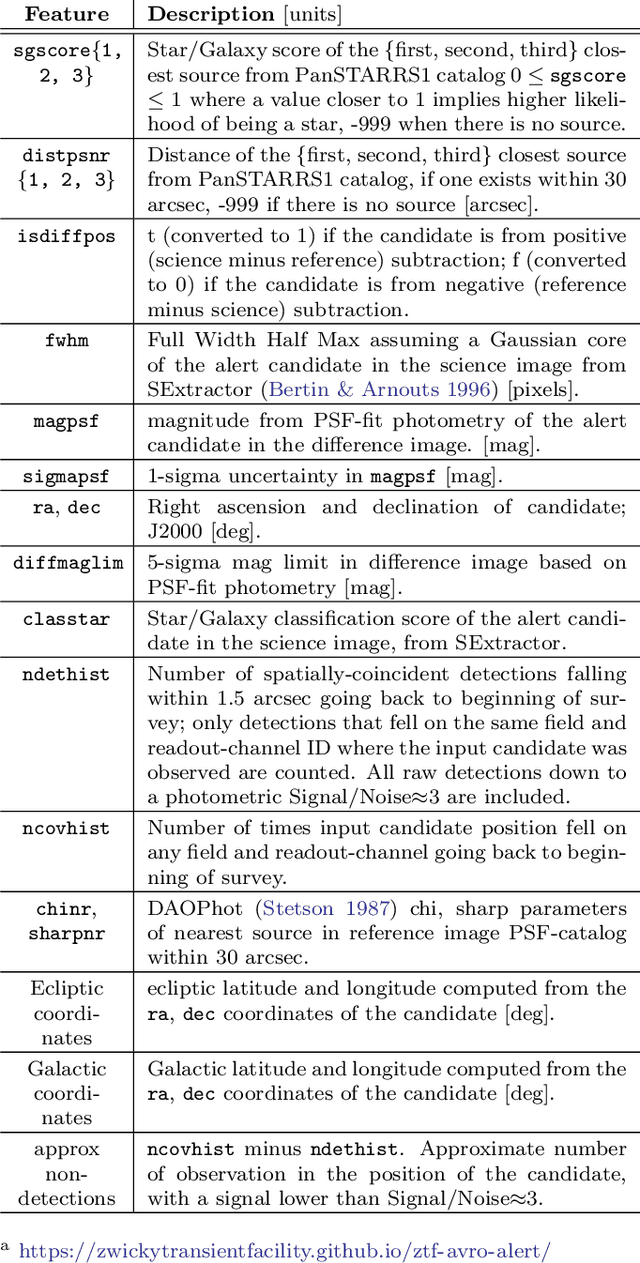
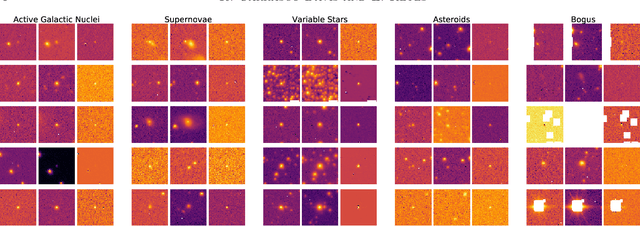
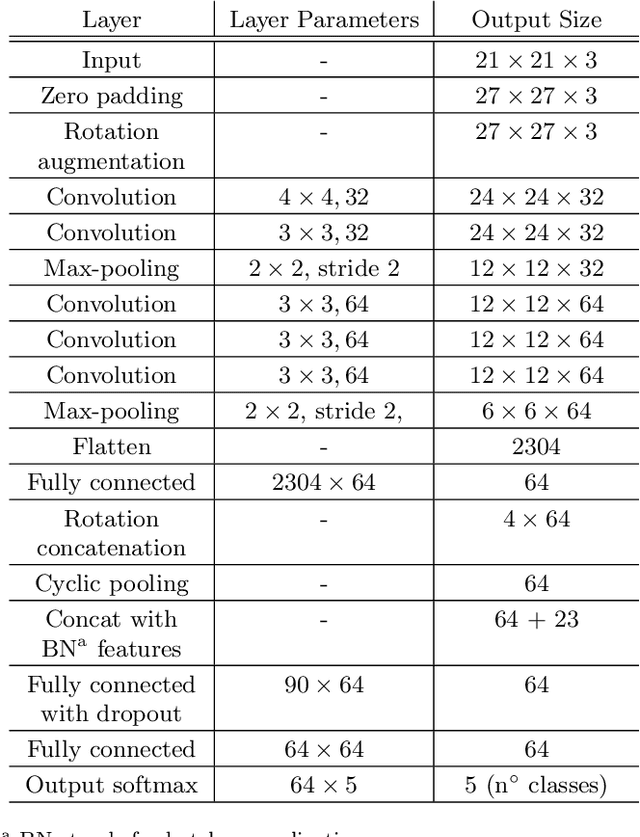
Abstract:We present a real-time stamp classifier of astronomical events for the ALeRCE (Automatic Learning for the Rapid Classification of Events) broker. The classifier is based on a convolutional neural network with an architecture designed to exploit rotational invariance of the images, and trained on alerts ingested from the Zwicky Transient Facility (ZTF). Using only the \textit{science, reference} and \textit{difference} images of the first detection as inputs, along with the metadata of the alert as features, the classifier is able to correctly classify alerts from active galactic nuclei, supernovae (SNe), variable stars, asteroids and bogus classes, with high accuracy ($\sim$94\%) in a balanced test set. In order to find and analyze SN candidates selected by our classifier from the ZTF alert stream, we designed and deployed a visualization tool called SN Hunter, where relevant information about each possible SN is displayed for the experts to choose among candidates to report to the Transient Name Server database. We have reported 3060 SN candidates to date (9.2 candidates per day on average), of which 394 have been confirmed spectroscopically. Our ability to report objects using only a single detection means that 92\% of the reported SNe occurred within one day after the first detection. ALeRCE has only reported candidates not otherwise detected or selected by other groups, therefore adding new early transients to the bulk of objects available for early follow-up. Our work represents an important milestone toward rapid alert classifications with the next generation of large etendue telescopes, such as the Vera C. Rubin Observatory's Legacy Survey of Space and Time.
Enabling real-time multi-messenger astrophysics discoveries with deep learning
Nov 26, 2019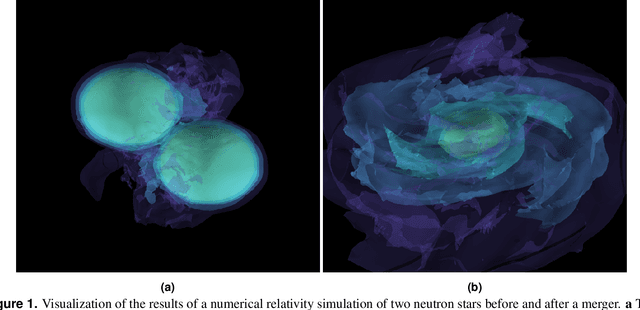
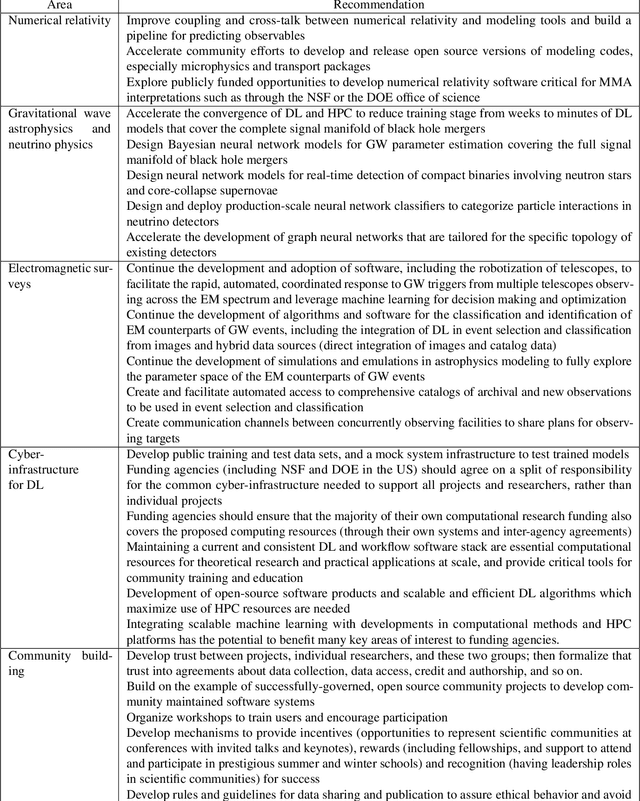
Abstract:Multi-messenger astrophysics is a fast-growing, interdisciplinary field that combines data, which vary in volume and speed of data processing, from many different instruments that probe the Universe using different cosmic messengers: electromagnetic waves, cosmic rays, gravitational waves and neutrinos. In this Expert Recommendation, we review the key challenges of real-time observations of gravitational wave sources and their electromagnetic and astroparticle counterparts, and make a number of recommendations to maximize their potential for scientific discovery. These recommendations refer to the design of scalable and computationally efficient machine learning algorithms; the cyber-infrastructure to numerically simulate astrophysical sources, and to process and interpret multi-messenger astrophysics data; the management of gravitational wave detections to trigger real-time alerts for electromagnetic and astroparticle follow-ups; a vision to harness future developments of machine learning and cyber-infrastructure resources to cope with the big-data requirements; and the need to build a community of experts to realize the goals of multi-messenger astrophysics.
* Invited Expert Recommendation for Nature Reviews Physics. The art work produced by E. A. Huerta and Shawn Rosofsky for this article was used by Carl Conway to design the cover of the October 2019 issue of Nature Reviews Physics
Deep-HiTS: Rotation Invariant Convolutional Neural Network for Transient Detection
Jan 02, 2017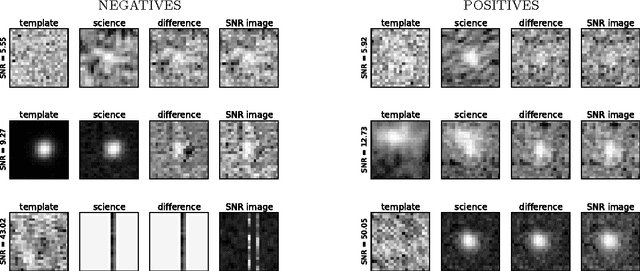

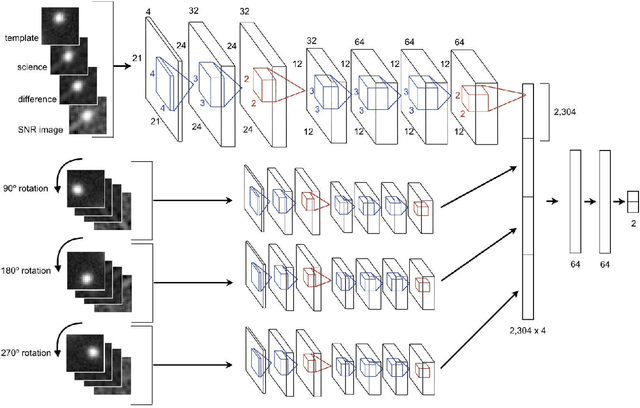
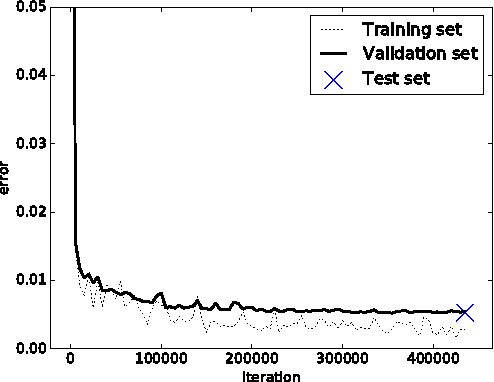
Abstract:We introduce Deep-HiTS, a rotation invariant convolutional neural network (CNN) model for classifying images of transients candidates into artifacts or real sources for the High cadence Transient Survey (HiTS). CNNs have the advantage of learning the features automatically from the data while achieving high performance. We compare our CNN model against a feature engineering approach using random forests (RF). We show that our CNN significantly outperforms the RF model reducing the error by almost half. Furthermore, for a fixed number of approximately 2,000 allowed false transient candidates per night we are able to reduce the miss-classified real transients by approximately 1/5. To the best of our knowledge, this is the first time CNNs have been used to detect astronomical transient events. Our approach will be very useful when processing images from next generation instruments such as the Large Synoptic Survey Telescope (LSST). We have made all our code and data available to the community for the sake of allowing further developments and comparisons at https://github.com/guille-c/Deep-HiTS.
 Add to Chrome
Add to Chrome Add to Firefox
Add to Firefox Add to Edge
Add to Edge